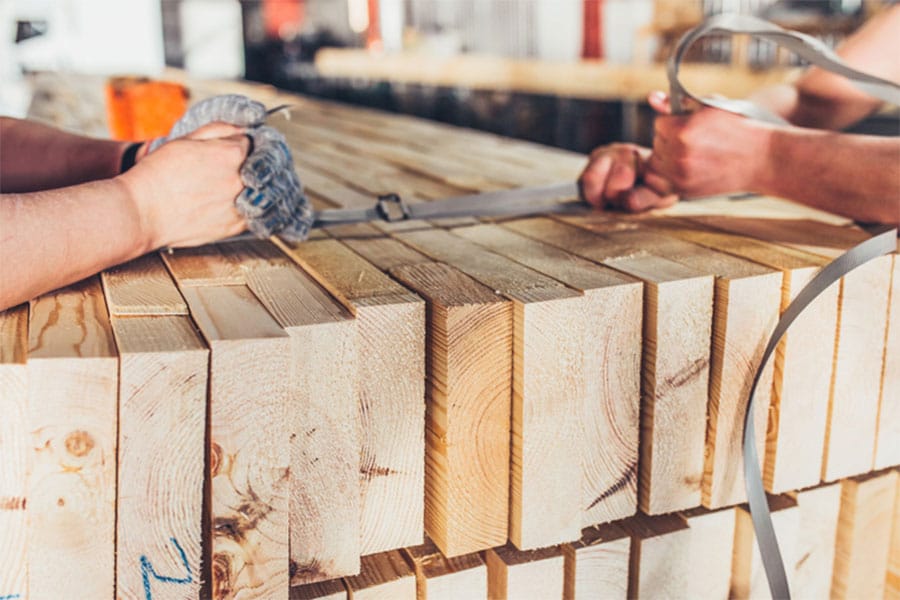Strapping materials are an essential part of the shipping industry. Strapping products bind packages and goods to pallets as varied as the cargo they are used to secure. Most commonly coming in three different material components, each with its positives and negatives, here we will explore the types of strapping products and what may be the best for your needs.
Polypropylene Strapping
First up is polypropylene, which is one of the most common strapping products used the world over. It is relatively inexpensive, easy to work with, and strong enough to be adequate for most light to medium-strength loads.
Pros Of Polypropylene Strapping
- Inexpensive: Polypropylene strapping is one of the cheapest strapping products widely used in the shipping industry. Due to its nature as synthetic material, it can be quickly manufactured and can last for long periods on the shelf without degrading.
- Great For Light Loads: Because of its stretching properties, polypropylene strapping allows for more lightweight products to be quickly processed.
- Easy To Use: Polypropylene can be applied by hand and doesn’t require complicated machinery or tools beyond the buckles used to fasten it. It is excellent for smaller operations and those that can spare the time to work with less efficiency.
Cons Of Polypropylene
- Weak And Stretchy: While polypropylene is not prone to breaking, it does stretch relatively quickly and has a low tensile strength, so once it is pulled out of shape, it is unlikely to return. These properties make the material somewhat brittle over time and reduce its overall reusability.
Steel Strapping
Steel strapping is the historic ancestor of modern synthetic products. Despite being older than polypropylene and polyester, steel is still used today.
Pros Of Steel Strapping
- Made Of Stronger Material: When applied in the right situation, steel is not prone to breaking and can handle most of the heaviest loads known to man.
- Government Mandated: On the rail, when products are not within a freight car, steel strapping is all but required along with other strapping products to ensure that cargo doesn’t shift and throw off the train’s weight. This fact alone will keep steel strapping around for the foreseeable future.
Cons Of Steel Strapping
- Cost: Of the three main types of strapping materials, steel is by far the most expensive to produce and store, and due to its weight, it will inevitably increase shipping costs.
- Frailty: While steel strapping may be strong, any time you need to bend the material, it loses a considerable amount of strength, creating natural breakpoints with little to no give.
Polyester Strapping
Arguably the most cost-effective strapping material, polyester is a versatile synthetic that combines the versatility of polypropylene and steel products.
Pros Of Polyester Strapping
- Strength: Like steel strapping, polyester can handle the heaviest materials without breaking, making it a premier material for moving everything from bricks to lumber and other bulky construction materials.
- Impact Absorption: When goods shift or an accident occurs, polyester has the highest rating of impact absorption due to its ability to flex and return to its original shape.
- Superior Elasticity: Unlike polypropylene, polyester has a far higher tensile strength, with many brands able to handle up to 2000 lbs of strain and still return to shape without much issue.
Cons Of Polyester Strapping
- Cost: It is similarly strong as steel but much cheaper than metal material. However, polypropylene is by far the most affordable option.
Reach Out to Strapping-Products.com To Learn More About Your Strapping Needs
While your choice of strapping material will depend upon preference and the goods you are shipping polyester or polypropylene are our most popular strapping products. To learn more about your options, feel free to reach out to the Strapping-Products.com team today by phone at 888-803-8140.


